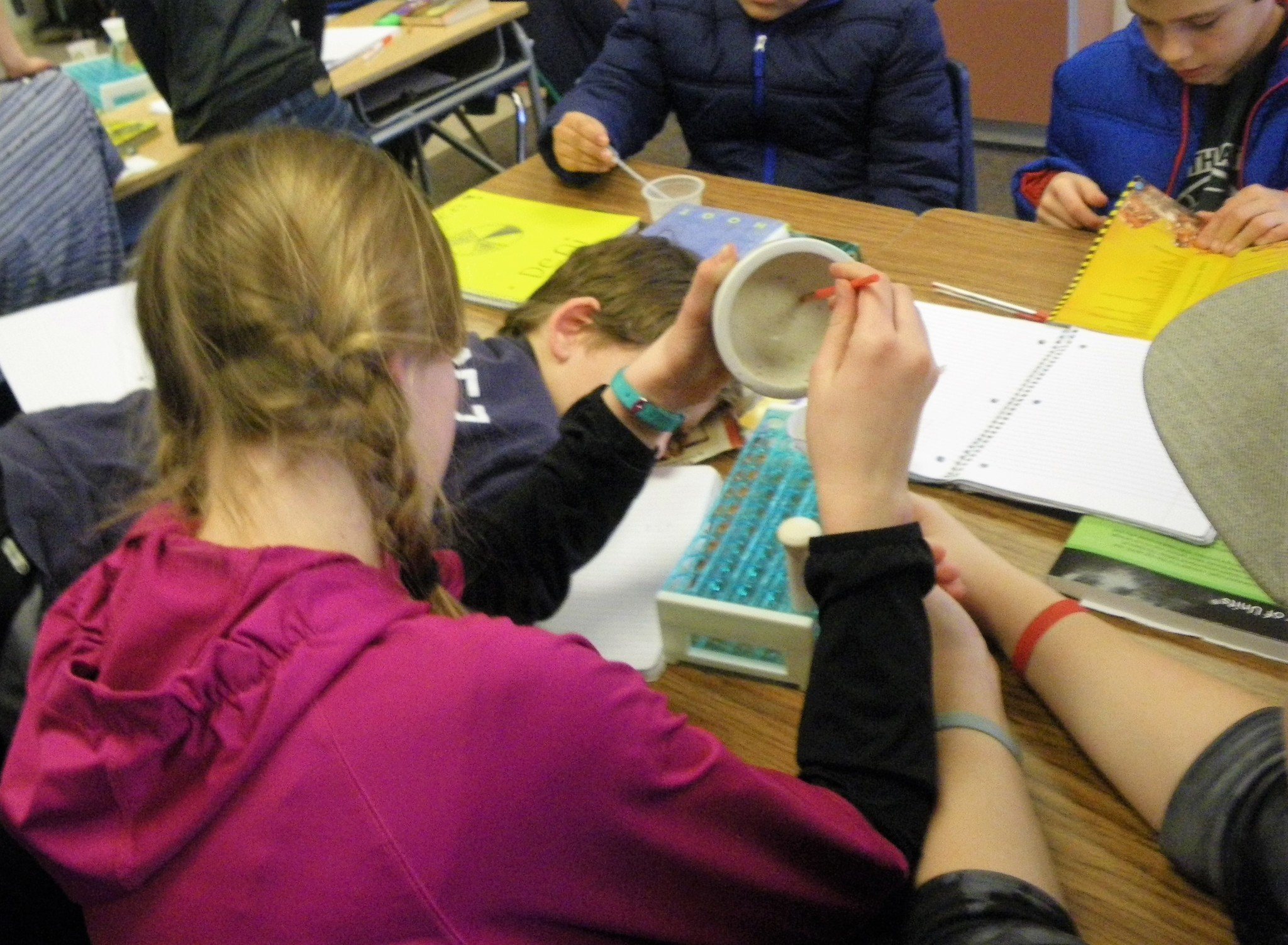Are easily-grown insects such as crickets the sustainable food of the future? The United Nations Food & Agriculture Organization thinks so, and promotes international research identifying edible insects and ways of raising them. The U.S. Department of Agriculture (USDA) recently granted hundreds of thousands of dollars to cricket-growers to refine their production and processing methods.
Just how nutritious are crickets? A STEM project in Orcas, Lopez and San Juan Island elementary schools coordinated by Kwiaht, and supported by the Satterberg Family Foundation, has over a hundred local Grade Five and Six students learning hands-on chemistry to find out.
Tackling this question involves college-level analytical methods for extraction and measurement of fats, carbohydrates, proteins, and vitamins. Students are learning to follow protocols, use metric units, and operate laboratory instruments from precision digital scales to spectrophotometers. “The foundation of analytical biochemistry is making measurements and following a recipe like baking a cake,” says project director and co-teacher Russel Barsh of Kwiaht, “If you measure things badly or get them out of order, the cake is a failure, and students can learn that years before they study high school or college chemistry.”
One of the central themes of this STEM project is replication, a fundamental principle of science. Student teams compare results within and between schools for consistency. There is no predetermined “right answer,” but rather the best answer that students can discover for themselves. Thus far, students have found that crickets retain very little of the carbohydrates they eat in plants, converting nearly all of it into fat; and that indeed, house crickets are about 14 percent fat by dry weight.
Not surprisingly, students in this project have also been tasting food-grade freeze-dried crickets and sharing them with friends. “Not bad,” is the comment most often heard.
Should islanders be raising crickets instead of cattle or sheep? “Nutritional value is just one part of the question, of course,” Barsh says. “Science is the beginning of a conversation about economics, the environment, and culture. Our goal is making the science approachable, intelligible, and fun.”
After learning to measure proteins, students will learn how to extract DNA from insects and use gel electrophoresis to identify the insects in a bat’s or bird’s last meal. Genetic tracing is also an important tool of food science.
Teachers participating in the 2017 program are Kimberly Malo, Lisa Jenkins, Lorri Swanson, and Warren Nagano. Lab assistants include Molly Harding, Sofia Fleming, Cheri Lanham, and Madison Miller.
For further information, contact: kwiaht@gmail.com




